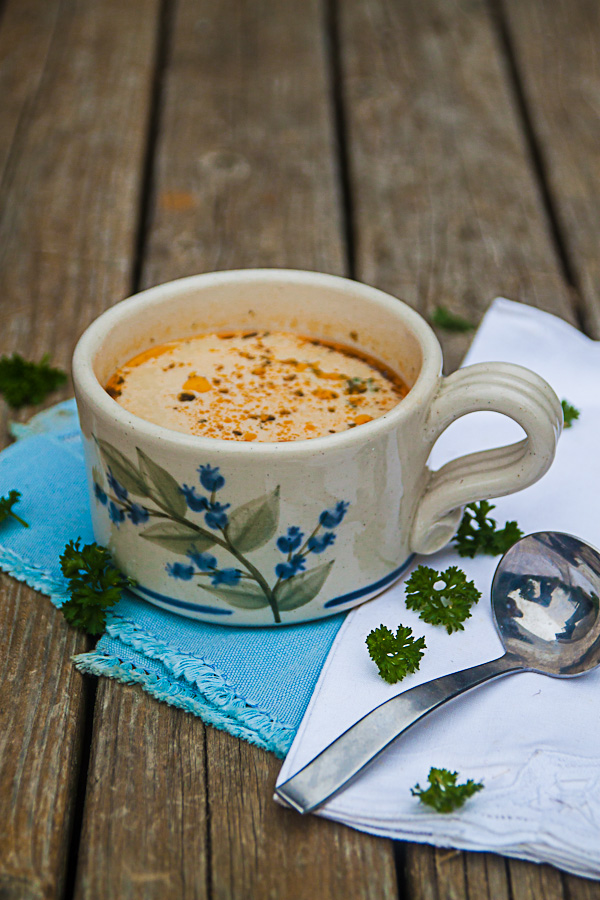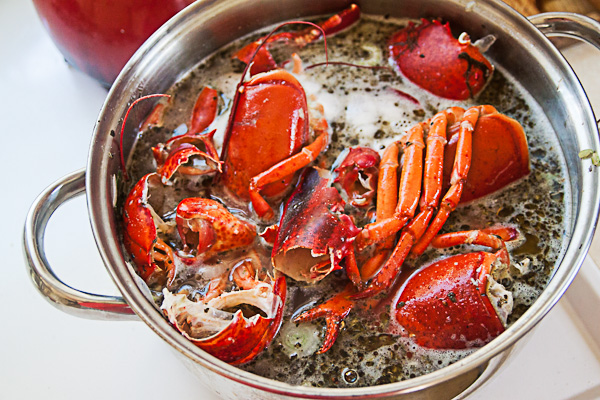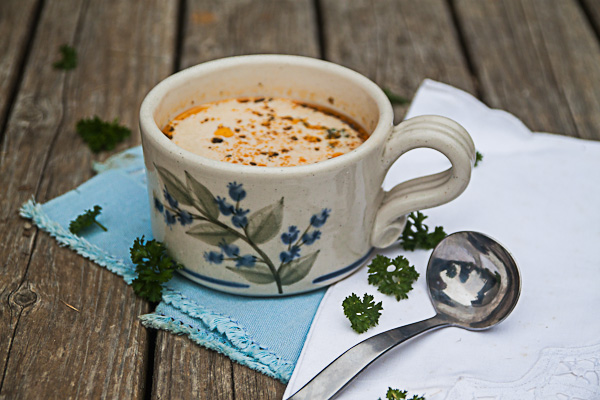loading...
This recipe appeared as part of my August 8th, 2013 column with The Advocate. To see the print-run version, click here. For more pictures and tidbits about preparing homemade stocks, keep reading!
-Helana
—
I’ve always admired the kinds of cooks who never let anything go to waste. We all know these people: the gardener who knows to stir-fry his beet greens, the baker who converts old bread into croutons and the chef who understands that the best kinds of soups and stews always begin with a high-quality stock.
The French word for stock, fond, translates to “foundation” or “base.” Rarely do we serve stocks by themselves, and they make up the backbone of some of the best soups, stews and sauces at home. Plus, knowing how to make high-quality stocks can save you both time and money all year round.
Good-quality stocks use ingredients that many of us choose to throw away. Bones or seafood shells actually have longer life cycles than just the actual meat on their bones. When boiled with an herb bundle and mirepoix (onions, carrots and celery), leftover bones and shells release natural flavors, infusing the water and creating a richly-flavored clear, thin liquid known as a “stock.”
But why make stocks at home? Especially when 16-ounces of seafood, beef or chicken “stock” can be purchased at your local grocer for only a couple of bucks?

Pictured: Seafood Bisque made from leftover Lobster Heads, tails, knuckles, and claws.
The answer to this question, literally, boils down to time, cooking preferences and a little bit of creatively. For me, I like the idea of letting nothing go to waste whenever I can, but the money saved from homemade stocks is also a great bonus. Just as my grandmother used to tell me to think of starchy pasta water as a necessary thickening ingredient for her summer tomato sauce, I regard homemade stocks as necessary ingredients for other recipes as well. For this Seafood Bisque, a homemade stock is a must, and what you don’t use can be frozen for future recipes.
Simmer leftover shellfish heads, claws and tails with your mirepoix and herbs before straining and converting into a bisque. Typically, crawfish and crab are most abundant in Louisiana, but if you have access to Maine or spiny lobster, this ingredient works well too. The key is to make use of every part of the creature that still has flavors (heads especially). Once the stock is prepared, either freeze or bring to a simmer with pre-cooked shellfish and cream. The results require little time in the kitchen and serious creamy-seafood flavor. Plus, stocks are a great way to bring abundant summer herbs out of the garden and into the kitchen. I suggest the use of parsley or thyme, but basil works here as well.
After all, it’s important not to let food go to waste, and what better way than an easy seafood stock and bisque made at home this summer?
Seafood Bisque
Makes: 6-8 servings
Time: 1 1/2 hours
Ingredients:
—Stock—
*4 tablespoons salted butter
*1 yellow onion, peeled and chopped fine
*2 carrots, stemmed, peeled and chopped fine
*2 celery ribs, ends removed and chopped fine
*1 cup Chardonnay or other dry white wine
*1-2 pounds shellfish shells (crawfish, lobster or crab)
*water, to cover
*2-3 thyme sprigs
*6 parsley stems
*2-3 bay leaves
*6 cloves garlic, minced or pressed
*1 tablespoon whole peppercorns
*Salt and pepper, to taste
—Bisque—
*1-2 lbs. cooked seafood (crab, crawfish or lobster), chopped
*2 cups heavy cream
1.) In the bottom of a heavy stock pan, melt butter over medium-low heat and add the mirepoix—onion, carrots and celery. Cook for five minutes, stirring occasionally, until the onions have started to become translucent.
2.) Add leftover seafood heads, tails and claws. Add wine and herbs and bring to a simmer. Add enough water to cover ingredients. Cover pot and simmer for 30 to 45 minutes over low heat.

3.) At 45 minutes, skim stock and taste. Adjust flavor with salt and pepper to taste, cover and simmer for an addition 15 minutes. When stock has reached desired thickness and flavor, remove from heat and strain (I use a strainer lined with cheese cloth). Cool, store and refrigerate. Stock can be used immediately or frozen. If freezing, leave enough room for stock to expand in container.
4.) To make bisque: bring stock to a simmer over medium heat and stir in cooked seafood. Warm for 3 to 5 minutes and add heavy cream. Cook for an additional 3 to 5 minutes until bisque just begins to simmer (do not boil). Remove from heat and serve with crusty bread or biscuits.
—
Follow Me on Pinterest: http://pinterest.com/helana/
Twitter: https://twitter.com/DancesWLobsters
Facebook: https://www.facebook.com/pages/Clearly-Delicious/103136413059101
Tumblr: http://clearlydelicious.tumblr.com/
Instagram: http://instagram.com/helanabrigman
Seafood Bisque,

No Comments